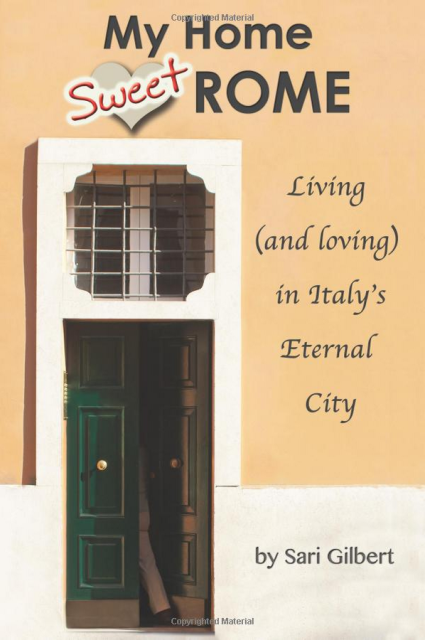About the book
It’s a nice place to visit but would you really want to live there? That’s the question I pose in my book, My Home Sweet Home: Living (and Loving) in the Eternal City after spending something like 40 years in what many have called the Eternal City. I’m not going anywhere soon, so my own personal answer would have to be “yes”. But it is definitely a “yes….. but”, as this is not a place for everyone. I was born and bred in New York City, in comparison to which Rome – despite the magnificent vestiges of its glorious history − can often seem like a backwater.
Over the centuries, millions of foreigners have travelled to Italy, but relatively few have decided to stay on for the rest of their lives, unless they are married and have put down family roots. Rome (and indeed much of Italy) attracts “northerners” because of its laidback life-style, its generally wonderful climate, its food and wine, and its celebrated architecture and artworks. But not all visitors form points north can adapt to a place where daily life is disorganized, chaotic and often incomprehensible.
I moved to Rome after finishing graduate school and then became a journalist, first for American and Canadian news organs and then for a prestigious Italian daily. I wrote this book partly because it was a fun thing to do. But also to describe what life is really like in the Italian capital, a place to which tourists flock in droves without really having much idea of where they are and sometimes what they are seeing. To sum it up, life in Rome is intriguing, intoxicating and frequently (very frequently) infuriating. But how to get this across without negating the good things about life in Italy and the joys that living here can also bring.
For most of my years in Italy, I have had a particular vantage point from which to view things Italian; not only was my graduate work – an M.A. and a Ph.D – dedicated to Italian history and politics, but as a journalist for major U.S. and Italian news organs I was well placed to examine the various aspects of Italian and Roman life: the politics, the stifling bureaucracy, the contradictory social customs, and − on a more enjoyable note – its gastronomical habits. As a journalist, I also had substantial exposure to the more tragic aspects of recent Italian history: Mafia violence, kidnappings for ransom, decades of terrorism, the assassination attempt on the life of the first (but not the last) non-Italian Pope, the meteoric rise of Silvio Berlusconi. Furthermore, as a single (and attractive) woman, I quickly found out what love affairs are really like with Italian men, be they average Giuseppes or high-placed movers and shakers.
The purpose of this book, then, was to use my experiences to let people know what is beyond the facade of the Italy you see when you come for a brief visit, or even for several visits, the highlights of which are visiting the country’s magnificent monuments and museums, driving through its glorious landscapes or eating its generally wonderful food. Off with the rose-tinted glasses and take a look at this city (and this country) for what it really is. Maybe that way you will end up, like me, appreciating it even more.


